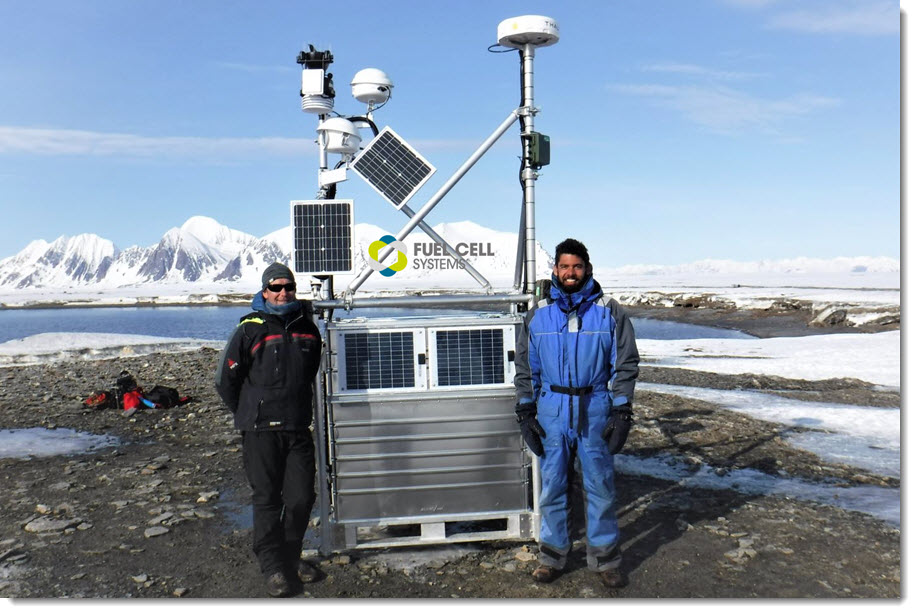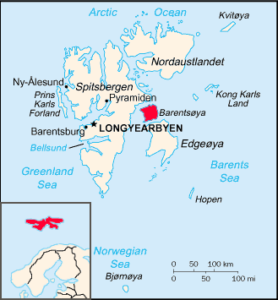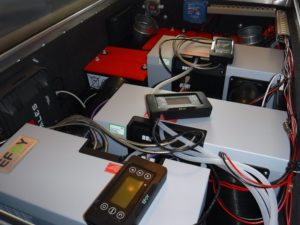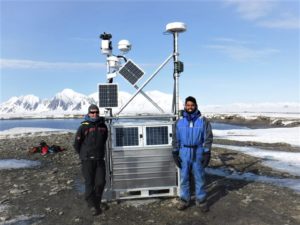
At 78 degrees North, Prins Karls Forland is a remote and uninhabited Arctic island off the coast of Svalbard, designated as a bird sanctuary in 1985. The area is an important breeding habitat for colonies of the Common Eider, Light-bellied Brent Goose, Barnacle Goose and Pink-Footed Goose.
 This rarely visited area has so far been subject to only limited research activities.
This rarely visited area has so far been subject to only limited research activities.
The IK Foundation’s aim is to promote scientific and cultural understanding of the natural world and one of their Bridge Builder Expeditions projects was to install an autonomous field station on the island to observe and record the local biosphere over a prolonged period.
Fuel Cell Systems were asked to find a solution to power the field station.
 A limited amount of power is generated from 2 x 20 watt solar panels, but this is very much a backup. Clearly, the solution needed to be environmentally friendly. Also, it needed to operate reliably at low temperatures to survive the arctic winter. Extended run times were important, as the remote location and protected status precludes regular visits to charge or change batteries.
A limited amount of power is generated from 2 x 20 watt solar panels, but this is very much a backup. Clearly, the solution needed to be environmentally friendly. Also, it needed to operate reliably at low temperatures to survive the arctic winter. Extended run times were important, as the remote location and protected status precludes regular visits to charge or change batteries.
 Fuel Cell Systems designed a solution utilising three EFOY PRO 2400 Duo fuel cells contained in a specially adapted Alubox enclosure and providing 300 watts of power. This is linked to a second enclosure containing 6 x 60 litre methanol fuel cartridges. The fuel is proving to be more than enough to last the summer months (May through to end of September) without any visit for refuelling required. More fuel will be needed to run the system through the arctic winter months, so a single visit to replenish the methanol fuel will take place in September. A remote monitoring system supplied by Fuel Cell Systems relays live data on the system, giving feedback on the condition of the fuel cells and highlighting any potential issues.
Fuel Cell Systems designed a solution utilising three EFOY PRO 2400 Duo fuel cells contained in a specially adapted Alubox enclosure and providing 300 watts of power. This is linked to a second enclosure containing 6 x 60 litre methanol fuel cartridges. The fuel is proving to be more than enough to last the summer months (May through to end of September) without any visit for refuelling required. More fuel will be needed to run the system through the arctic winter months, so a single visit to replenish the methanol fuel will take place in September. A remote monitoring system supplied by Fuel Cell Systems relays live data on the system, giving feedback on the condition of the fuel cells and highlighting any potential issues.
 The fuel cell is running smoothly and reliably, and regular environmental data is fed back to the IK Foundation detailing rainfall, temperature, humidity, air pressure and wind speed. A photo is also taken every day – one of which captured a picture of a polar bear passing near the field station.
The fuel cell is running smoothly and reliably, and regular environmental data is fed back to the IK Foundation detailing rainfall, temperature, humidity, air pressure and wind speed. A photo is also taken every day – one of which captured a picture of a polar bear passing near the field station.
The following link gives more detail on the project from the IK Foundation. https://www.ikfoundation.org/ilinnaeus/iprojects/spitsbergen-p5.php#fieldreports2019
Source: Rachael Barker-Fuel Cell Systems
Read the most up to date Fuel Cell and Hydrogen Industry news at FuelCellsWorks




